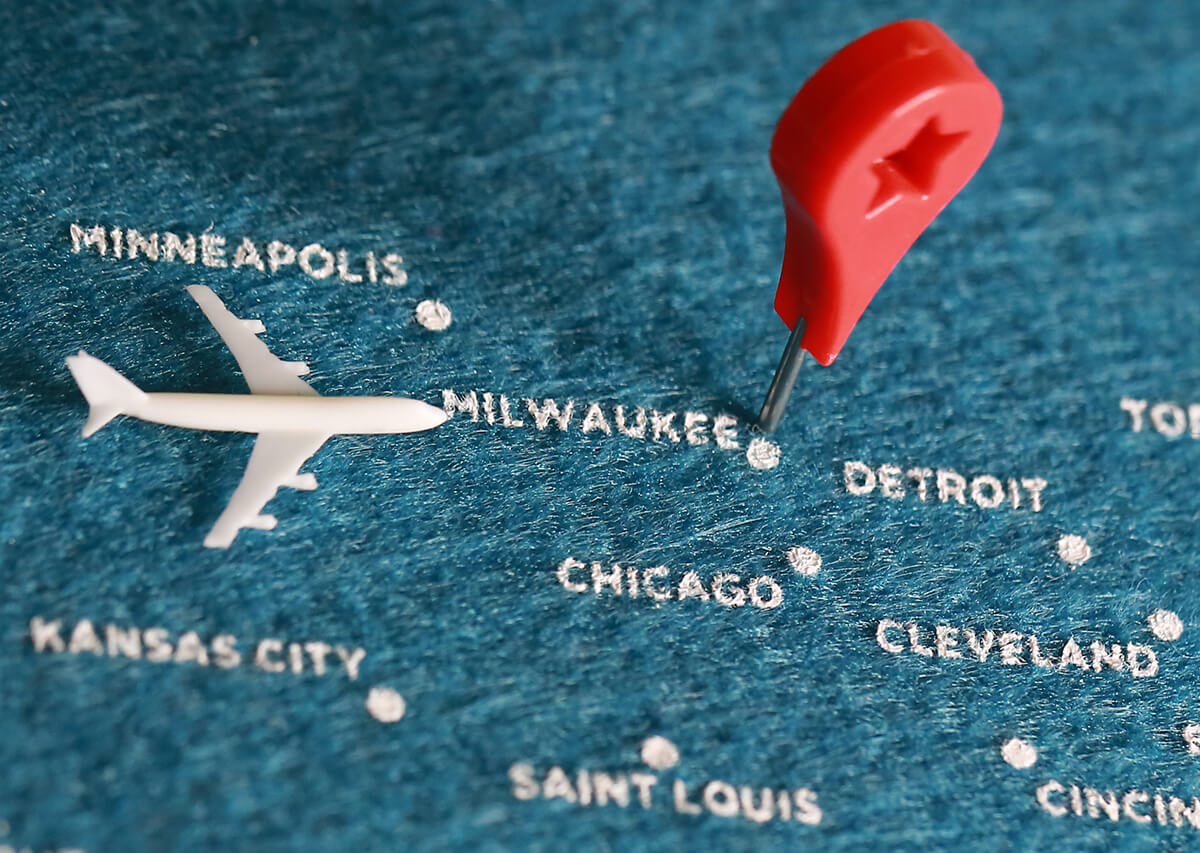The Democratic Party’s recent announcement that Chicago will be the site of its 2024 national convention follows on the heels of the Republican Party’s selection of Milwaukee for its quadrennial conclave. These decisions about venues by party poohbahs means just one thing: The Midwest will be a, if not the, principal battleground for next year’s presidential campaign.
Often disparaged as “flyover country,” a phrase that entered American lingo in the 1970s for the 2,475 air miles between New York and Los Angeles, the Midwest is politically complicated, competitive and changing.
The heartland, a native might say, beats with unpredictability. Democrats and Republicans know this and want to display their allegiances in the region that could decide who occupies the White House on January 20, 2025.
According to the U.S. Census Bureau, a dozen states make up the Midwest: Indiana, Illinois, Iowa, Kansas, Michigan, Minnesota, Missouri, Nebraska, North Dakota, Ohio, South Dakota and Wisconsin. These states came into sharper focus for their political and cultural importance just over a half-century ago.
Time named “The Middle Americans” as the 1969 “Man and Woman of the Year.” That recognition came after citizens in the nation’s center flexed their collective muscles in helping to elect Richard Nixon president in 1968. The magazine explained its choice for singling out one particular group rather than an individual by noting, “Above all, Middle America is a state of mind, a morality, a construct of values and prejudices and a complex of fears. The Man and Woman of the Year represent a vast, unorganized fraternity bound together by a roughly similar way of seeing things.”
With the exception of Michigan and Minnesota, Nixon carried all the other Midwestern states in ’68. Four years later, he did better, prevailing throughout the region. Middle America was on the march.
Yet, since 2000, the year when it became popular to refer to Republican states with the color “Red” and Democratic states as “Blue” ones, the Midwest has become more complex with its political activity. It’s true that some states, such as Illinois and Minnesota, have voted Democratic each of the past six presidential cycles, and Missouri, Kansas, North Dakota and South Dakota have reliably gone for Republican those same six times.
But Ohio, Michigan, Indiana, Wisconsin and Iowa have been competitive in certain contests, flipping from one party to the other. Iowa, for instance, has supported the Democratic White House candidate three times (2000, 2008 and 2012) and the Republican on three other occasions (2004, 2016 and 2020).

Indiana, which hadn’t voted for a Democratic presidential candidate since 1964, even went for Barack Obama in 2008, a flashing warning sign that it’s risky to take a Midwestern state for granted. Given what had been happening politically the past few decades, Obama’s victory ran counter to all Hoosier expectations. A little history helps tell the story.
Up until 1969 and for the preceding six years, Indiana’s governor and both of its U.S. senators were Democrats. The election of 1968 resulted in a Republican winning as governor—a situation that continued for the next 20 years.
After the 1980 election, Republicans occupied the governor’s office and both Senate seats, a complete reversal of the Democratic dominance in the 1960s. Though Democrats won four consecutive races for governor (1988, 1992, 1996, and 2000) and three for the Senate (1998, 2004, and 2012), Republicans during those 42 years since 198- have increasingly made Indiana a one-party state, prevailing seven times in gubernatorial campaigns and on 13 occasions in Senate contests.
Joe Donnelly ’77, ’81J.D., won the 2012 Senate campaign, the most recent Democrat to win a statewide race in Indiana.
Why has there been such a sizable political shift in Indiana? Various factors certainly play a role, including candidate quality, party organization and financial support. But perhaps the most important reason is the perception that the Democratic party has moved away from the ideological center and became more readily identified with progressive causes or policies.
The coalition of blue-collar workers, farmers, minorities and immigrants shaped by Franklin D. Roosevelt has broken apart, with many in that earlier Democratic alliance, particularly those in the working class and in agriculture, finding a new home in the Republican Party.
It was as though the Democrats went in a direction that the party’s traditional allies no longer wanted to follow. Ronald Reagan, who consistently voted for Roosevelt and considered him a hero, was fond of saying, “I didn’t leave the Democratic Party; the Democratic Party left me.”
Still, Indiana voted for Obama, and other Midwestern states exhibited a knack for change. In 2016 Donald Trump, a Republican, carried two “blue” states, Michigan and Wisconsin. In Michigan, Democrats had won on the presidential level since 1992 and in Wisconsin since 1988. Four years later, Joe Biden, a Democrat, returned those two key states back to his party’s column, adding 26 votes to his Electoral College victory of 306 to 232.
What’s in store for ’24?
The Midwest is a region with the power to surprise, a lesson Democrats and Republicans have learned (and re-learned) since Middle America took center stage in the late 1960s. In a country that keeps teetering on the precipice of being 50/50 politically, the parties’ choice of cities to conduct their conventions next year deliver their own messages, which ultimately could be as important as what they say in their platforms.
A lifelong Hoosier, Bob Schmuhl is the Walter H. Annenberg-Edmund P. Joyce Professor Emeritus of American Studies and Journalism at Notre Dame. He’s the author of several books, including Fifty Years with Father Hesburgh: On and Off the Record and The Glory and the Burden: The American Presidency from the New Deal to the Present (both published by Notre Dame Press).